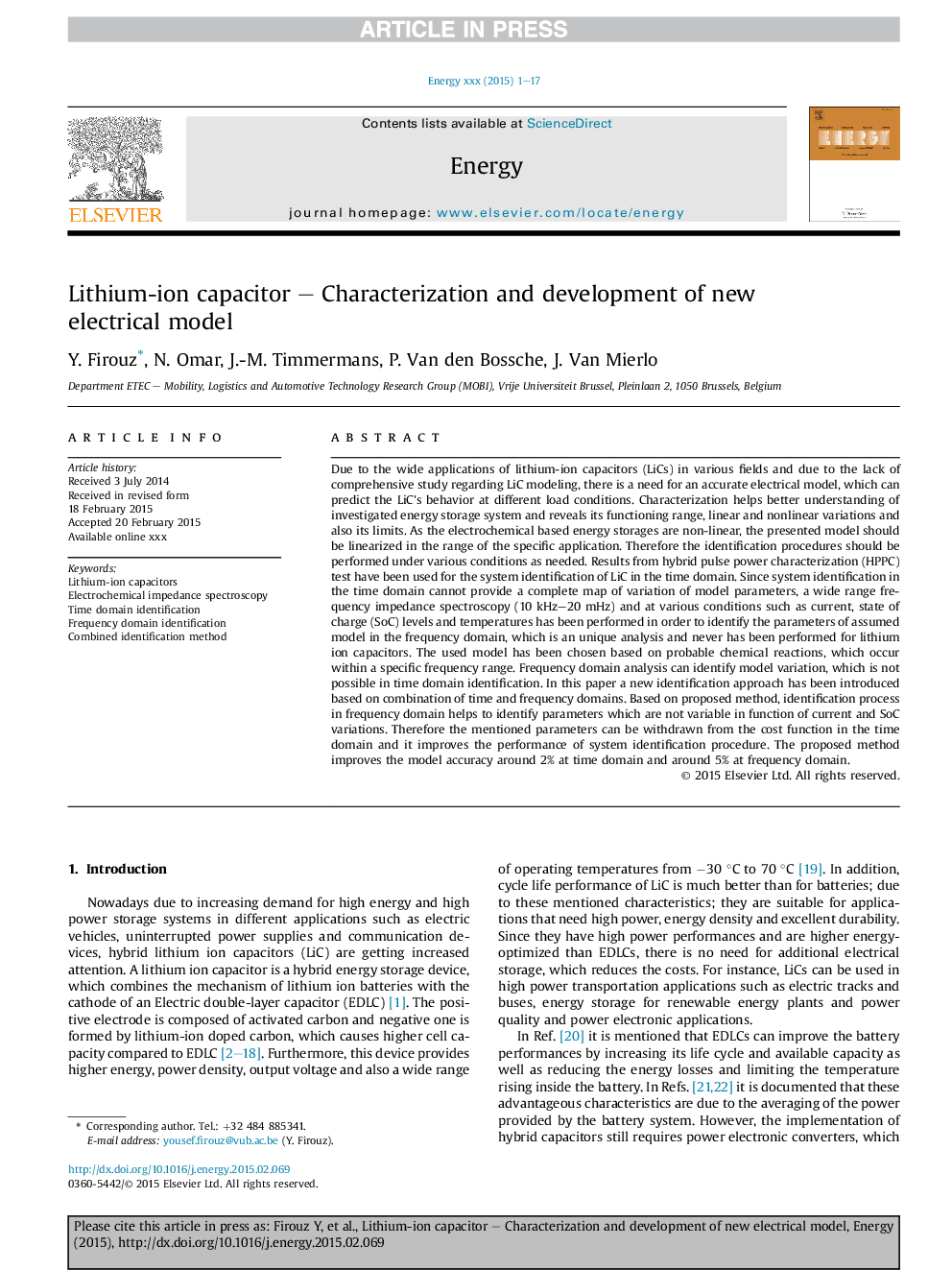| کد مقاله | کد نشریه | سال انتشار | مقاله انگلیسی | نسخه تمام متن |
|---|---|---|---|---|
| 8074984 | 1521463 | 2015 | 17 صفحه PDF | دانلود رایگان |
عنوان انگلیسی مقاله ISI
Lithium-ion capacitor - Characterization and development of new electrical model
ترجمه فارسی عنوان
خازن لیتیوم یون - مشخص کردن و توسعه مدل الکتریکی جدید
دانلود مقاله + سفارش ترجمه
دانلود مقاله ISI انگلیسی
رایگان برای ایرانیان
کلمات کلیدی
خازن های لیتیوم یون، طیف سنجی امپدانس الکتروشیمیایی، شناسایی دامنه زمان، شناسایی دامنه فرکانس، روش شناسایی ترکیبی،
موضوعات مرتبط
مهندسی و علوم پایه
مهندسی انرژی
انرژی (عمومی)
چکیده انگلیسی
Due to the wide applications of lithium-ion capacitors (LiCs) in various fields and due to the lack of comprehensive study regarding LiC modeling, there is a need for an accurate electrical model, which can predict the LiC's behavior at different load conditions. Characterization helps better understanding of investigated energy storage system and reveals its functioning range, linear and nonlinear variations and also its limits. As the electrochemical based energy storages are non-linear, the presented model should be linearized in the range of the specific application. Therefore the identification procedures should be performed under various conditions as needed. Results from hybrid pulse power characterization (HPPC) test have been used for the system identification of LiC in the time domain. Since system identification in the time domain cannot provide a complete map of variation of model parameters, a wide range frequency impedance spectroscopy (10Â kHz-20Â mHz) and at various conditions such as current, state of charge (SoC) levels and temperatures has been performed in order to identify the parameters of assumed model in the frequency domain, which is an unique analysis and never has been performed for lithium ion capacitors. The used model has been chosen based on probable chemical reactions, which occur within a specific frequency range. Frequency domain analysis can identify model variation, which is not possible in time domain identification. In this paper a new identification approach has been introduced based on combination of time and frequency domains. Based on proposed method, identification process in frequency domain helps to identify parameters which are not variable in function of current and SoC variations. Therefore the mentioned parameters can be withdrawn from the cost function in the time domain and it improves the performance of system identification procedure. The proposed method improves the model accuracy around 2% at time domain and around 5% at frequency domain.
ناشر
Database: Elsevier - ScienceDirect (ساینس دایرکت)
Journal: Energy - Volume 83, 1 April 2015, Pages 597-613
Journal: Energy - Volume 83, 1 April 2015, Pages 597-613
نویسندگان
Y. Firouz, N. Omar, J.-M. Timmermans, P. Van den Bossche, J. Van Mierlo,
